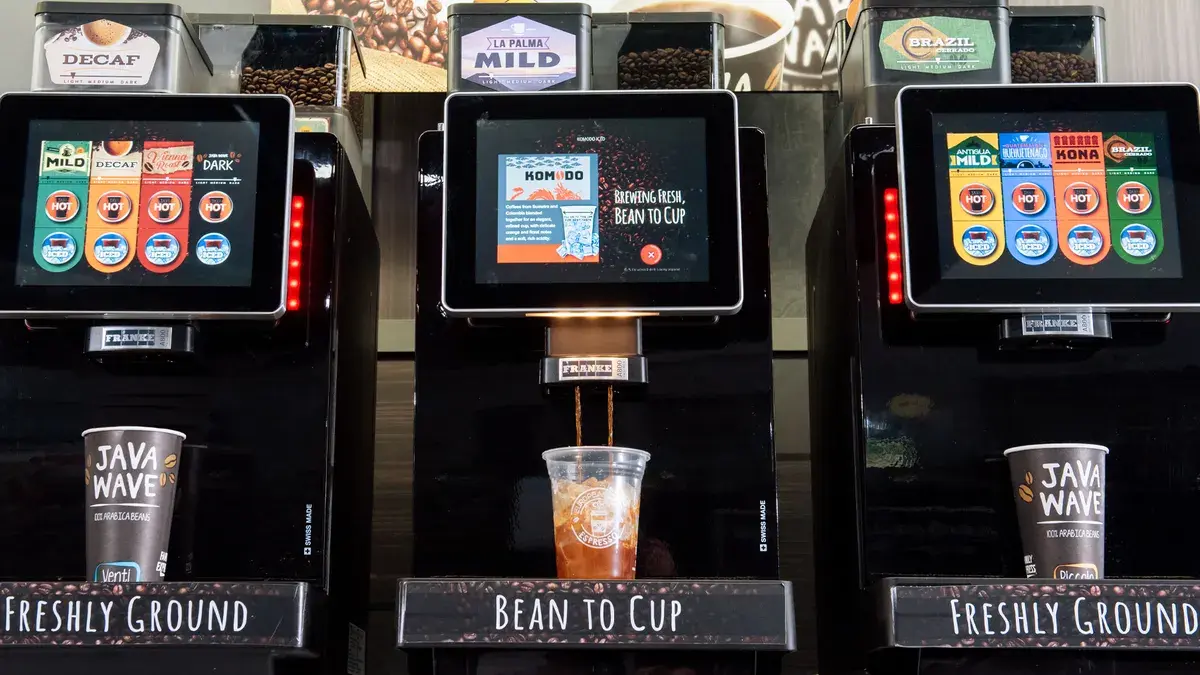
The grocery industry has become the backbone of community life, yet it’s also one of the toughest environments for facilities teams. In 2024, U.S. grocery sales exceeded $800 billion, but margins remained razor-thin at 1–3%, leaving little room for inefficiencies. Meanwhile, direct store operating expenses (DSOE)—including utilities, maintenance, and repairs—rose 12.7% in two years, with repairs and maintenance up 17.3%.
Every hour a freezer goes down, or a deli oven fails, revenue—and brand reputation—are at risk. According to Vixxo’s data, 19% of all break-fix work orders occur within 30 days of the last repair, a sign of poor workmanship or lack of preventive strategy. Those “repeat calls” often inflate annual R&M costs by 5–10% across multi-site portfolios.
From Fresh to Frustrated: What’s Really Causing the Spend Spike
The average grocery store now operates over 20 major asset classes—from refrigerated cases to bakery ovens and HVAC systems—all running nearly 24/7. With utility costs up 16% in 2022 and 6.4% in 2023, grocers are seeing operational costs accelerate faster than revenue growth.
Key drivers behind the cost surge include:
- Deferred maintenance: Emergency repair volume increased 22% in 2024 among chains without PM programs.
- Vendor inconsistency: National portfolios often work with 300+ providers, each with varying rates, service levels, and compliance records.
- Invoice overages: Audits reveal 9–14% markup on labor and 12–15% on materials, often slipping through invoice approvals without verification.
When you combine these inefficiencies, the total cost of ownership (TCO) of equipment rises 25–30% beyond budgeted expectations.
The Cost of Waiting Until It Breaks
Reactive repair models can feel cheaper up front but cost exponentially more over time. Industry data shows unplanned maintenance is 3–9 times more expensive than preventive maintenance. In grocery environments where refrigeration uptime is mission-critical, that difference is even starker.
- A single walk-in freezer failure can lead to $5,000–$20,000 in product loss.
- For a chain with 300 stores, one day of downtime per year per location equals $6 million+ in lost product and labor costs.
- Locations with consistent PM programs cut equipment-related energy spend by 16–18% within the first year and extend equipment lifespan by 25% or more.
Chart: Cost of Reactive vs Preventive Maintenance
|
Maintenance Type |
Avg. Cost per Incident |
Frequency per Year |
Annualized Cost (per site) |
|
Reactive Repair |
$2,800 |
10 |
$28,000 |
|
Preventive Visit |
$650 |
10 |
$6,500 |
|
Savings Opportunity |
— |
— |
$21,500 per site annually |
Technology Is Closing the Gap Between Cost and Quality
For decades, facility managers accepted the tradeoff between cost, quality, and scale. That tradeoff no longer applies. Smart platforms like VixxoLink™ and its Vixxo Verify™ cost-checking engine are changing how grocers manage repairs across thousands of assets.
- 200,000+ vetted technicians across 100+ trades deliver consistent coverage nationwide.
- 40 years of work order history power the industry’s most accurate cost benchmarking.
- Patented invoice validation (CAPS) automatically flags duplicate tickets, rate kickers, and inflated parts costs before approval.
- Real-time dashboards give visibility into SLAs, average days-to-complete, and first-time fix rates across sites.
One grocery customer saw average invoice savings of 9–11% per work order and 30% fewer callbacks after integrating VixxoLink.
Chart: Invoice Savings After Implementation
|
Metric |
Before VixxoLink |
After VixxoLink |
Improvement |
|
Avg. Invoice Cost |
$540 |
$480 |
-11% |
|
Repeat Work Orders |
19% |
13% |
-32% |
|
Days to Complete |
14.7 |
8.7 |
-41% |
|
On-Time Completion |
78% |
92% |
+14 pts |
When Data Drives Maintenance, Waste Drops
Data visibility is now the biggest competitive advantage for grocery facilities teams. With integrated systems like VixxoLink, directors can:
- Forecast asset lifecycle costs with accuracy down to the site level.
- Identify top-spend trades by month or region (e.g., HVAC, refrigeration, plumbing).
- Prioritize high-impact repairs and track warranty opportunities automatically.
One feature, SmartGuides, uses pre-set decision trees to help store teams enter accurate repair requests. That reduces “bad tickets”—incorrect or incomplete work orders—by up to 25%, improving dispatch accuracy and reducing unnecessary technician visits.
The result is a facility ecosystem that learns from every ticket—lowering spend per work order and preventing the repeat failures that erode margins.
The People Behind the Platform
Technology alone doesn’t solve grocery’s facilities challenges. It’s the combination of platform intelligence and expert oversight that ensures measurable savings. Vixxo’s hybrid model pairs dedicated account teams with field analytics to manage:
- 3 million+ assets across 200,000+ sites in North America.
- 35,000+ projects annually, including remodels, refrigeration upgrades, and equipment rollouts.
- 10,000+ active service providers, each evaluated for compliance, response time, and customer satisfaction.
This infrastructure ensures that grocery clients maintain performance consistency even as they scale.
Tomorrow’s Grocery Store Runs on Preventive Insight
The grocery store of the future will rely on data-driven, predictive maintenance—not spreadsheets or reactive calls. With energy prices rising and labor markets tightening, facilities leaders who embrace automation and analytics will not only save money but safeguard the in-store experience that keeps customers loyal.
Grocers who transition to predictive models are already reporting:
- 15–20% lower total facilities spend within 18 months.
- 10–12% faster average response times.
- Up to $1M in annual savings for every 250 stores managed proactively.
Final Takeaway
As grocery stores evolve into multi-service destinations—complete with kitchens, delis, and beverage bars—facilities performance is becoming a defining brand differentiator. A failed freezer, flickering light, or broken oven doesn’t just interrupt operations. It interrupts customer trust.
With the right partner, platform, and processes, those problems become preventable.
That’s how Vixxo helps grocery leaders spend less and stress less—one work order at a time.
Let’s talk.
Get in touch and fill out the contact form below!




